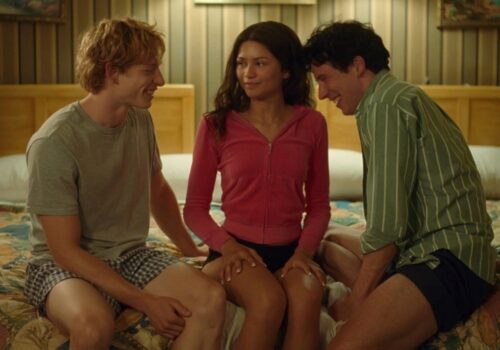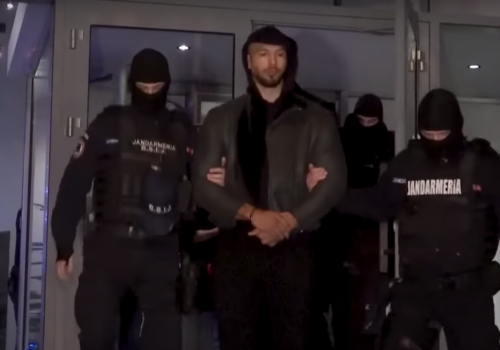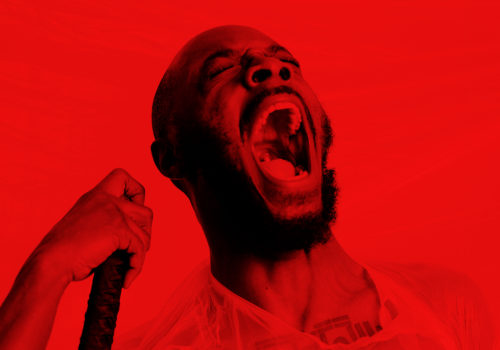Remembering Occupy Dame Street
Words: Eva O’Beirne
On March 8 2012, a late-night Garda raid dismantled a camp based in front of the Central Bank. Part of the “Occupy” movement, anti-austerity protestors had made their home on the site for five months.
Now that ten years have passed since the end of Occupy Dame Street, District is looking back to see if much has changed since the protest.
The Occupy movement was sparked by a desire for “real” democracy and equality amongst the global recession of the late 00s. The first Occupy protest to receive widespread attention, Occupy Wall Street in New York City’s Zuccotti Park, began on 17 September 2011. By 9 October, similar protests had taken place or were ongoing in over 951 cities across 82 countries.
In Ireland, three cities experienced the Occupy movement: Dublin, Cork and Galway.
Occupy Dame Street was born out of a desire to mark International Day of Solidarity in a way that would never be forgotten. Against the backdrop of economic hardship, uncertainty and unemployment, the hashtag #OccupyDameStreet began to gain traction on Facebook and Twitter.
The trade union movement had already gotten 100,000 protestors out on the streets of Dublin in November 2010. According to Professor Helena Sheehan, “there was something in the air.” On the first day of the Occupy Dame Street protest, over 300 people turned up to build the site that would become known as “Tent Town”.
Under the careful eye of the American embassy (who warned American citizens to stay away from Dame Street), the camp started to gain national recognition. A projector was set up to reflect the national debt on the façade of the Central Bank in the first few days of the protest.
Initially, around 60 protesters set up camp in tents outside of the Central Bank’s head office. The tents were attached to each other and a free Wi-Fi connection was established anonymously in the first days of the movement.
Around 1,000 people visited the campsite between October 8-11. Another protest hosted by the demonstrators had over 2,000 people in attendance. Alcohol and drugs were banned from the camp, with protestors under strict instructions to not harass or talk to Central Bank employees.
The camp also imposed a “no-politics” policy, determined to promote unity across party lines and to encourage those on both sides of the political spectrum to take part in the movement.
With gigs from musicians such as Christy Moore throughout November and December, the Occupy Dame Street camp appeared to be a utopia of Irish resistance. But as winter progressed, efforts began to splinter.
Due to a conflict between those for whom physical occupation of the site was a core principle, and those who wanted to create a nationwide movement, the success of the protest became “impossible”.
In an interview with the Irish Times just days after the clearance of the camp, protestor Rob Dunlop explained the situation that unfolded: “It became like a place with cabin fever where those who could leave were thought of as not being truly involved.”
Conflict began to develop between those who were available for shorter hours, such as students, people with jobs or family responsibilities, and those who chose to occupy the camp full-time.
Occupy Dame Street ultimately fell apart due to its inability to function as both a symbol of Irish resistance and as an organisation.
District Magazine
Unlike in Occupy Wall Street where protesting and camping out was seen as a job taken in shifts, the Dame Street equivalent had no rota. In other camps, protestors were expected to spend only three to four days on-site before taking a break, but this idea never properly took hold in Dublin.
By late November, many of the people who were veteran activists or experts in organisation had abandoned Dame Street. Some of them wanted to move participation out into other communities to spread the anti-austerity movement, while the permanent occupiers wanted to focus efforts on the Central Bank site.
Occupy Dame Street’s camp was dismantled by Gardaí in the early hours of 8 March. Around 15 protesters who were members of the Occupy Dame Street group were present.
The friction between protestors within the camp, and other organisations such as trade unions outside of the camp only accelerated the decline of Occupy Dame Street. If it was less insular, who knows what have happened?
But it’s not fair to blame protestors for being insular and wanting control when they felt their worlds were falling apart in front of them.
Occupy Dame Street was outlived by Occupy Cork by five days and Occupy Galway by two months. For eight months, Ireland experienced the Occupy movement, and for good reason. The unemployment rate was at 15.35 per cent, and people were terrified for their well-being.
That same terror has reared its head this year with the news that inflation will be at over four per cent for 2022. The average asking price for a house in the first quarter of 2022 is 299,093 euro. There are currently 9,150 homeless people in Ireland, which is over 5000 more than in 2011.
Will an Occupy movement happen again? Who knows. But we wouldn’t be surprised if more protests coincide with the new rise in the cost of living and the poor Government response to it.
Elsewhere on District: Is Ireland ready for nightclubs to stay open until 6am?






